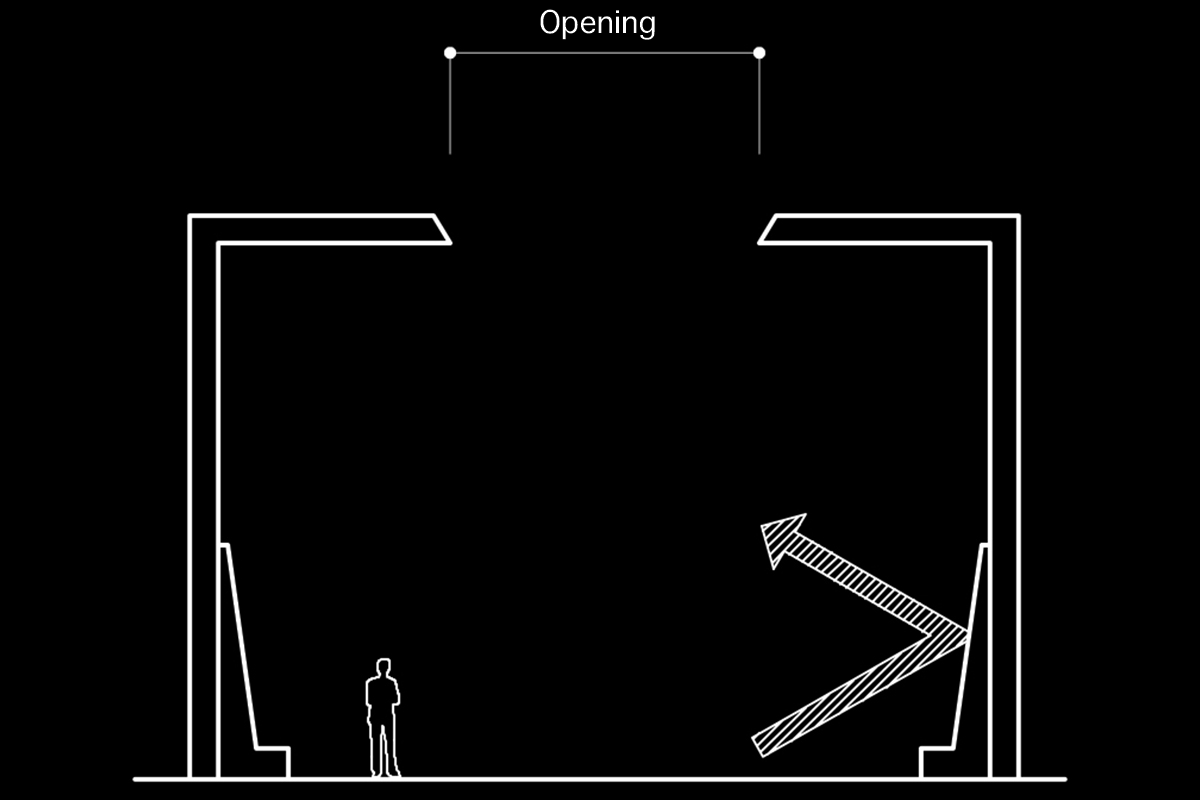Is it possible to achieve soundproofing without sealing?
11/15/2024

Others
Rooms such as soundproof rooms and anechoic chambers, designed to enclose a space and prevent sound interference, need to be sealed environments. It is ideal to enhance the sealing efficiency to achieve a state close to complete airtightness.
However, in practice, soundproof rooms and anechoic chambers cannot be considered completely sealed. This is because ventilation pathways are incorporated.
A sealed room becomes a space isolated from outside air, making it impossible for people to enter. Additionally, if there are heat-generating components inside, it can lead to problems such as temperature increases, as heat dissipation would not be possible.
Therefore, in a sealed space, ventilation systems are typically installed, which creates a connection between the indoor and outdoor air.
As a result, it is necessary to combine ventilation and soundproofing, which is why a silencer duct (muffler) is installed.
In the case of soundproofing walls or acoustic treatment, rather than soundproof rooms or anechoic chambers, soundproofing can be achieved without sealing.
Now, regarding the theme of this article, “Is it possible to achieve soundproofing without sealing?” The answer is “Yes, it is possible!”
However, stating this merely presents a general perspective, which isn’t very engaging for a technical article. What we wanted to convey in this article is that “high levels of sound insulation can actually be achieved with soundproofing designs that do not require sealing!”
Our company has published several articles in the past.
- Soundproof Doors without sealing
https://anechoic-room.com/techint/ultimate-soundproof-door-sealing-method/ - Noise control measures for through shafts
https://anechoic-room.com/techint/noise-control-measures-for-through-shafts/
These are methods we employ to ensure high sound insulation without sealing. This time, however, we will discuss an application based on “The Room of Turell.”
- The Room of Turell
https://anechoic-room.com/techint/tarells-room/
The Room of Turell is a space surrounded by heavy concrete with an open ceiling. What would happen if we consider this as a soundproof room?
If a noisy machine, such as a compressor, is placed and operated inside the Room of Turell, the noise generated by the compressor will reverberate and amplify through the floor and walls, ultimately finding its way to the open ceiling, allowing it to escape outside the room.
On the other hand, noise generated outside the room will also flow into the interior through the open ceiling.
In other words, as a soundproof room, it is unsuitable, and the open ceiling without a silencer allows sound to pass directly through.
However, while it is unsuitable as a soundproof room due to its structural design, it can still be engineered to function as a soundproof room even with an open ceiling.
At the beginning, I mentioned the silencer duct. But what if we consider the Room of Turell itself as a silencer? If the room itself has silencing capabilities, it would effectively mitigate both the noise escaping through the open ceiling and the sound entering through the same opening.
A silencer has sound-absorbing treatment on the inside. Since the walls of the Room of Turell are all rigid and reflect sound, applying sound-absorbing treatment to the inner walls would effectively create a simple silencer.
In other words, it is possible to create a room with an open ceiling that still has a certain level of soundproofing capabilities.
(Note) Simply applying sound absorption treatment has its limit in terms of sound insulation performance, so additional measures are necessary.
The longer a silence is, the greater its sound-dampening effect.
In the past, our company created a “sound-dampening passage” for demonstration purposes. It is a 10-meter-long passage that can accommodate people, but it is not a straight passage; instead, it has a winding curved design.
At each entrance and exit of the sound-dampening passage, people stand and engage in conversation. However, the voices that pass through the passage disappear completely, making it impossible to hold a conversation. Even shouting cannot be heard.
Depending on its design, a silencer can have a significant perceptual effect as well.
What if we actually built a soundproof room in a shape similar to the Room of Turell?
Now, returning to the topic, can a soundproof room with an open ceiling be actually built and used in practice ? We have experience in this area.
The project involved a soundproof room where the sound source generates heat, but there was a desire to avoid heat discharge through mechanical ventilation-hence, natural ventilation was used. The design included an open ceiling to allow the rising temperature to escape.
This soundproof room has a simple design without fans or intake/exhaust silencers, which helped to keep costs down.
However, designing an open-ceiling soundproof room, while simple, is not easy. As mentioned earlier, it’s not enough to just apply sound absorption treatment; various strategies are necessary.
The Room of Turell was mentioned merely as a concept, but depending on the design approach, it is indeed possible to create a uniquely shaped soundproof room like this.
Our company has addressed various requests in the past. We believe that challenging tasks allow us to demonstrate our capabilities, so if you are facing difficulties with noise control or constructing acoustic measurement spaces, please do not hesitate to contact us with your questions, such as “This seems difficult” or “Is there a way to do this?”